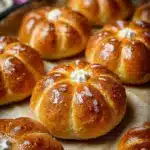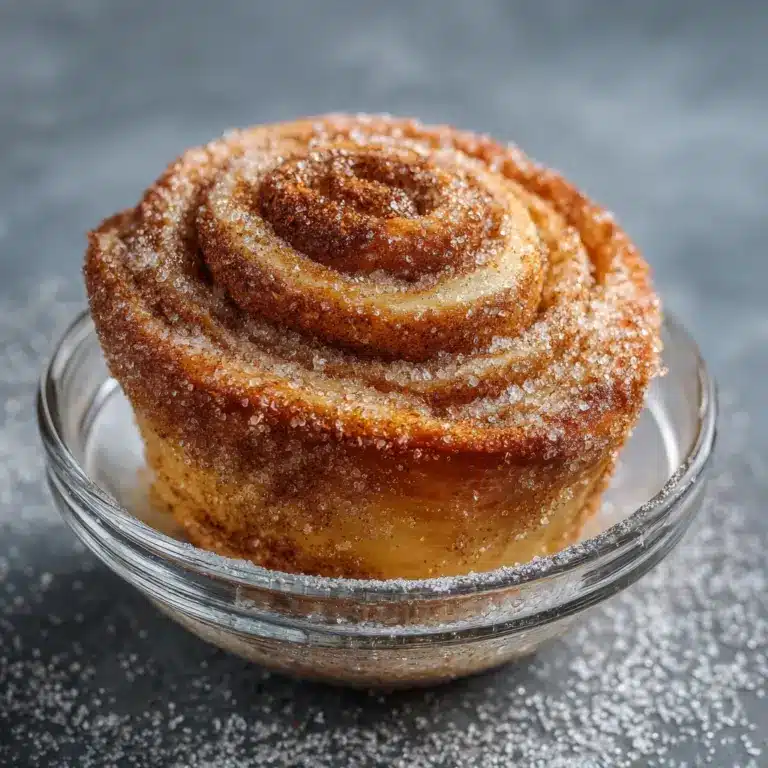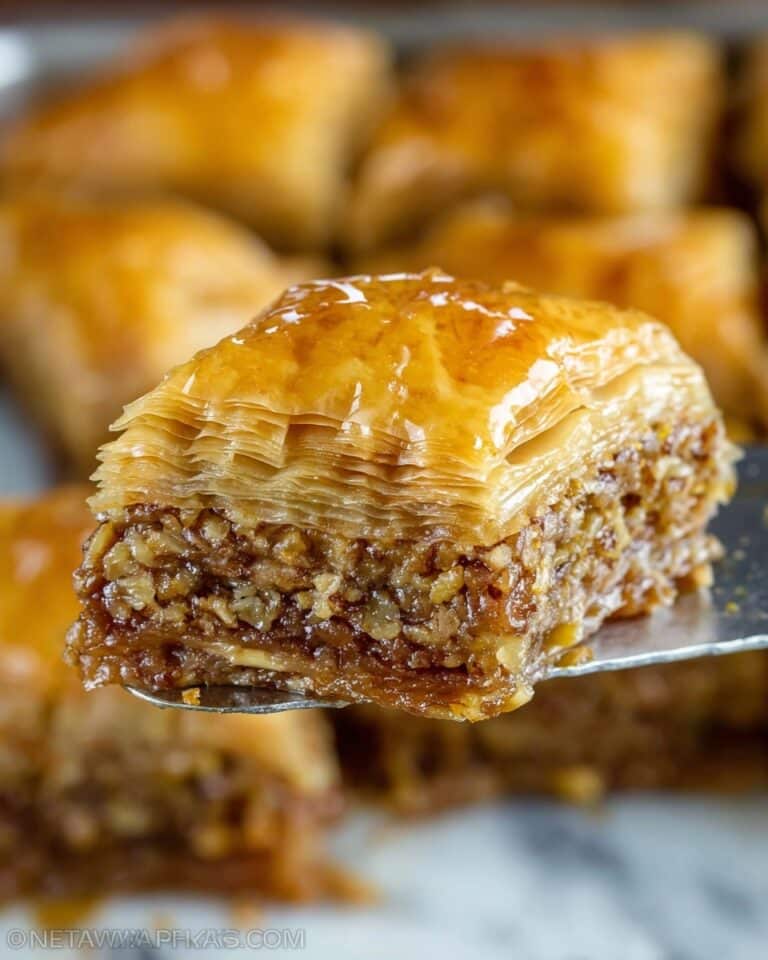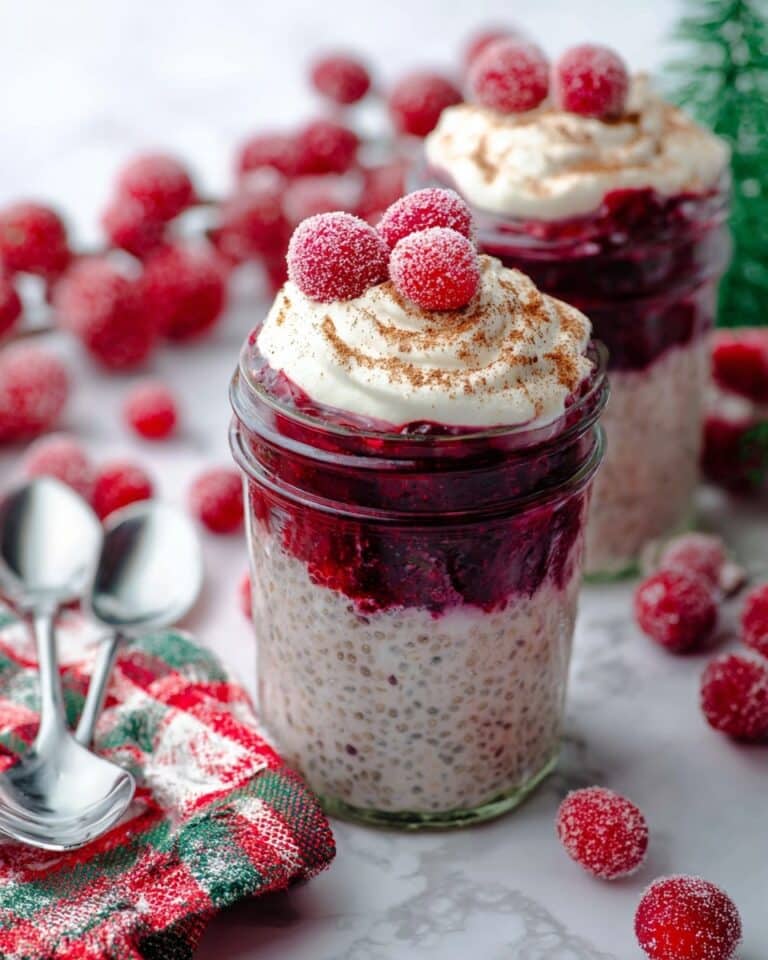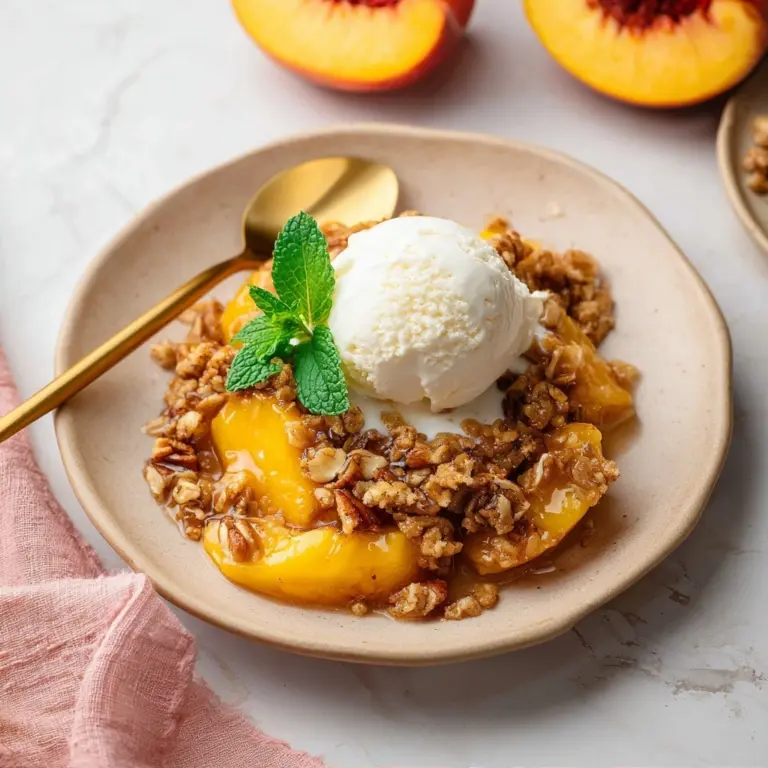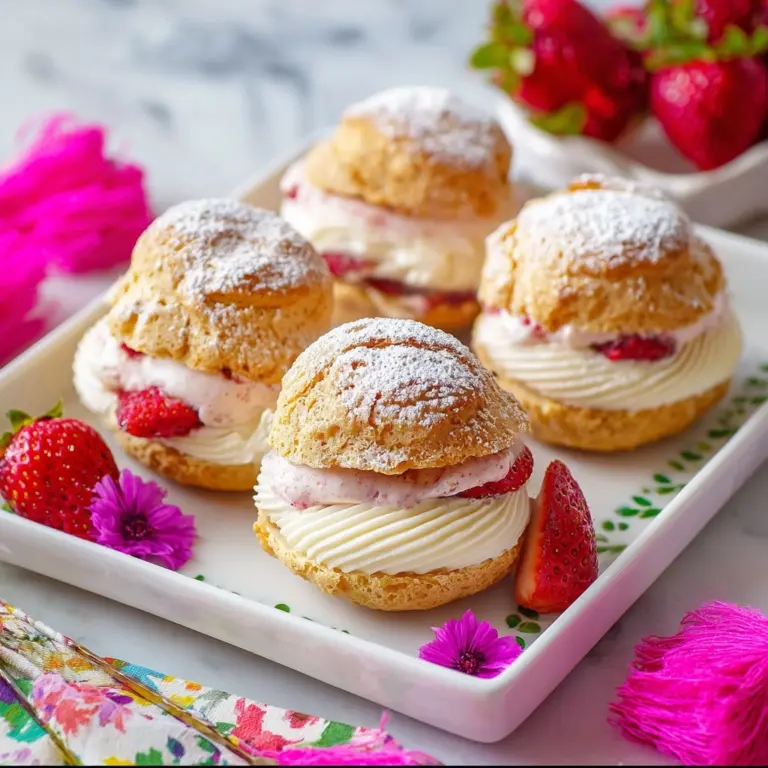Easter Breads Recipe
There’s something truly magical about making Easter Breads Recipe at home: the sweet, tender dough, the glossy finish, and those nestled eggs, all coming together in a show-stopping display that’s made for gathering around the table. This loaf has been a staple of my family’s spring celebrations for as long as I can remember, and every bite bursts with nostalgia, buttery richness, and just a hint of sweetness. If you’ve been dreaming of baking something that’s both eye-catching and utterly delicious, this recipe will become a treasured part of your holiday tradition.
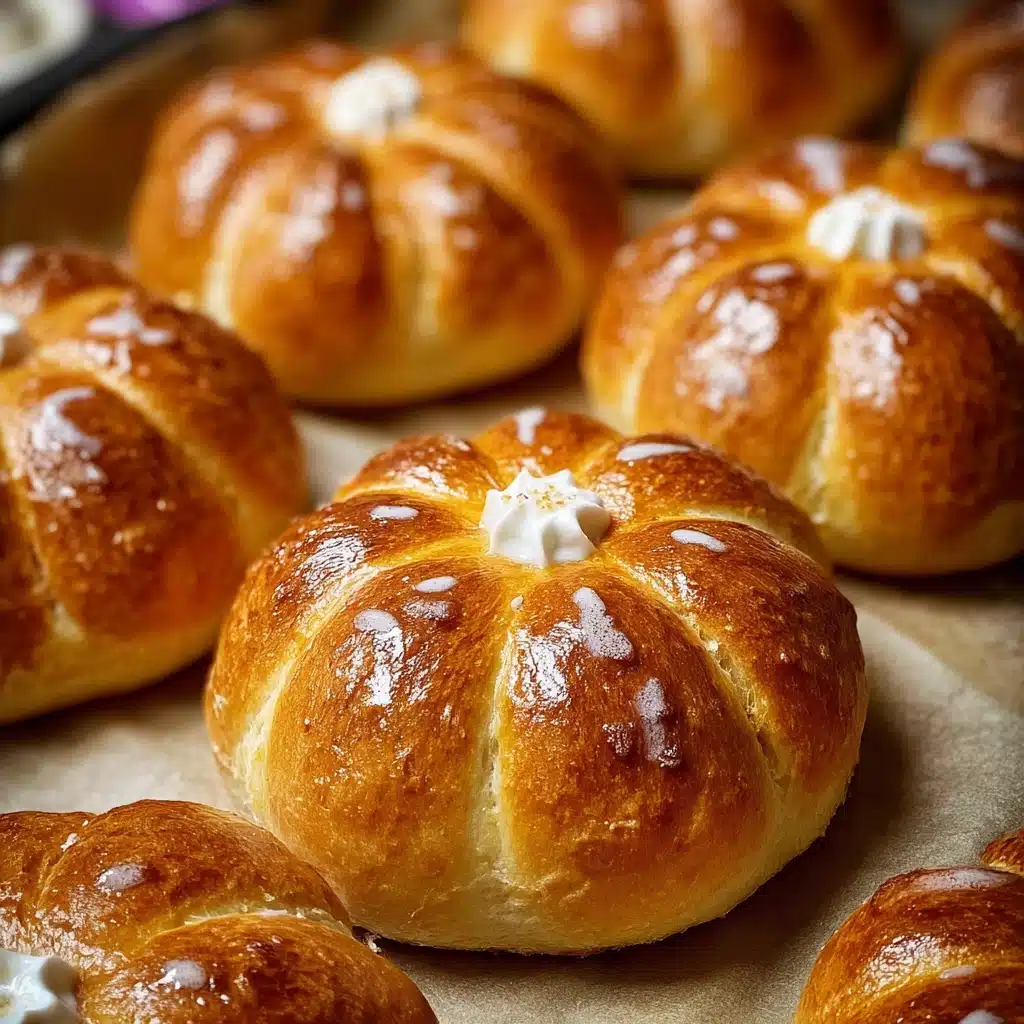
Ingredients You’ll Need
Gathering your ingredients for Easter Breads Recipe is pure excitement—each one is simple but absolutely essential for that distinctive, pillowy crumb and eye-catching finish. The magic of this bread comes from how these ingredients work together, so don’t skip or substitute if you can help it!
- Active Dry Yeast: The secret to a beautifully airy bread; make sure it’s fresh for the best rise.
- Milk: Whole milk adds richness and a lovely soft texture to the dough, and helps with browning.
- Sugar: Brings a subtle sweetness that perfectly balances the eggs and butter.
- Butter: Softened for that melt-in-your-mouth quality; don’t skimp here!
- Salt: Just a touch sharpens the other flavors without making the bread salty.
- Eggs (for dough): Lend gorgeous color and create a tender, enriched crumb.
- Flour: All-purpose, measured correctly—too much flour makes dense bread, so spoon and level!
- White Eggs (uncooked, shell-on): Tucked right into the dough for the iconic holiday look.
- Egg Wash: Gives each bun that bakery-fresh, irresistible shine on top.
How to Make Easter Breads Recipe
Step 1: Activate the Yeast
Start by waking up your yeast! In a small bowl, combine half a cup of warm milk and a teaspoon of sugar, then sprinkle the yeast over the top. Give it a stir and let it stand for about 10 minutes. By the end, your mixture should be bubbly and fragrant—proof that your yeast is alive and ready to get to work.
Step 2: Prepare Liquid Ingredients
In the bowl of your stand mixer, pour in the remaining cup of very warm milk, all the sugar, salt, and softened butter. Stir everything together gently. If your butter remains lumpy, simply set the bowl over a warm water bath to encourage it to melt into the milk—this step ensures your bread will be tender throughout.
Step 3: Incorporate Eggs and Yeast
Next, pour in your three beaten eggs, followed by that blissfully frothy yeast mixture. Give everything a soft mix to combine—at this stage, your dough is beginning to take on its signature golden glow and rich character.
Step 4: Form the Dough
Attach the dough hook to your mixer and slowly add flour, a cup at a time. You’re looking for a soft, slightly tacky dough that pulls away from the sides of the bowl but clings ever-so-gently to the bottom. Let it knead for 8 to 12 minutes—this is where the gluten develops, giving your Easter Breads Recipe its classic airy texture.
Step 5: Proof the Dough
Butter a large bowl and gently plop in your kneaded dough, giving it a turn to coat the surface with buttery goodness. Cover the bowl with a tea towel and place it somewhere warm and draft-free (like an oven with just the light on). Let it rise for about 90 minutes, or until beautifully doubled in size—patience pays off here!
Step 6: Shape the Buns
Now comes the fun part! Punch down your dough to release the air, then divide it into 14 pieces. Shape 12 of those into chubby, round buns about 3/4-inch thick. Nestle them onto buttered baking sheets and use a spoon to make a small hollow in the center of each, then gently press in a raw egg (shell on!). This is the instantly recognizable touch of any true Easter Breads Recipe.
Step 7: Make the Cross Toppings
With the remaining dough, roll two 13-inch ropes, then cut those into 24 strips (about 6 inches long). Carefully lay two strips across each egg to form a cross, tucking the ends underneath each bun—now your breads look just like the ones from bakeries and childhood celebrations.
Step 8: Apply Egg Wash
Whisk together a large egg with a teaspoon of water, then brush the tops of your buns (but not the eggs themselves) for a glossy, golden finish. This extra shine is what makes your Easter Breads Recipe absolutely bakery-worthy.
Step 9: Bake
Preheat your oven to 375°F. Place the buns in the center and bake for 18 to 20 minutes, until puffed and deep golden brown. Let them cool until just warm before serving—they’re at their best slightly fresh and fragrant.
How to Serve Easter Breads Recipe
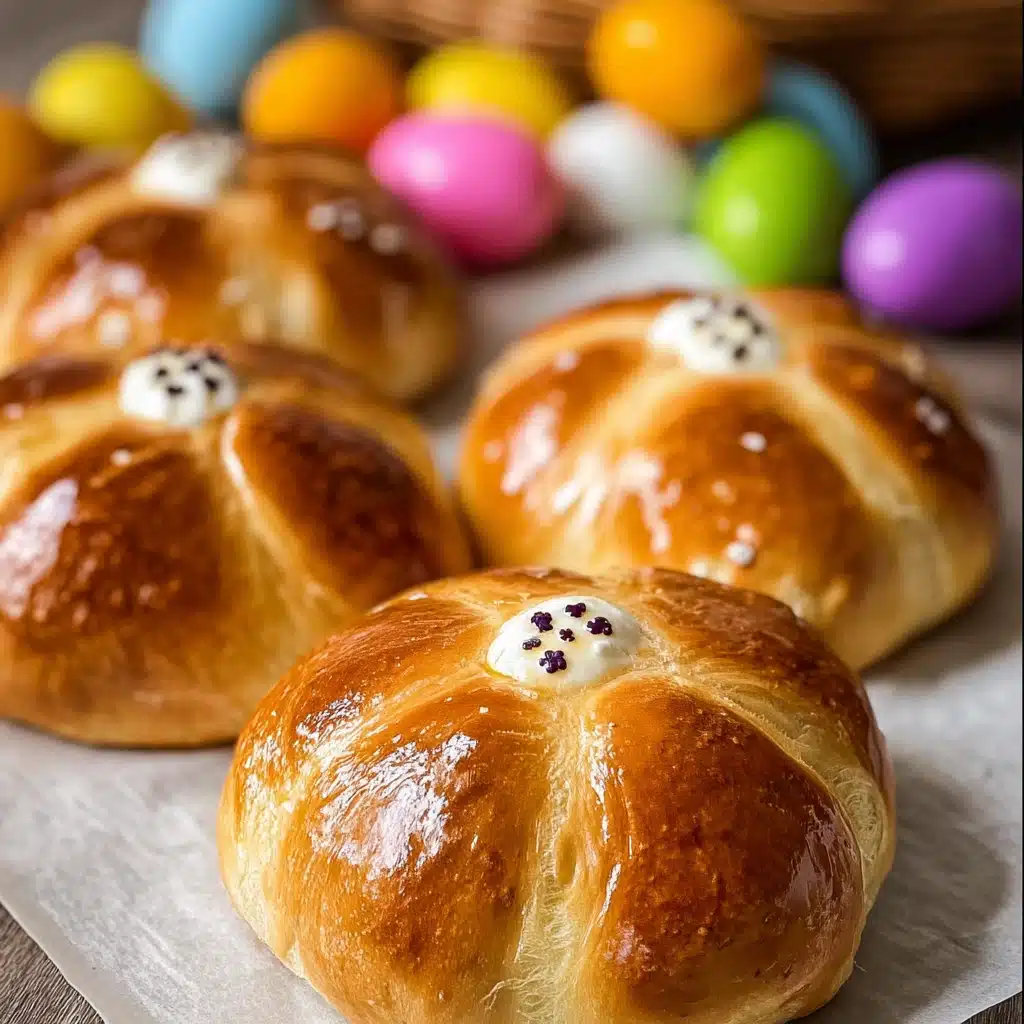
Garnishes
For that final wow factor, try dusting the cooled breads with a touch of powdered sugar, or add a pretty ribbon around the bread for a festive pop. You can even sprinkle some toasted sliced almonds on top before baking for crunch and extra color!
Side Dishes
Easter Breads Recipe pairs beautifully with both sweet and savory sides. Offer sliced fresh fruit, a platter of cheeses, or even some herby butter. A selection of cured meats makes a lovely balance to the bread’s subtle sweetness.
Creative Ways to Present
Display your Easter Breads Recipe in a beautiful basket lined with a pastel napkin, or create a dramatic centerpiece by stacking the buns high on a cake stand. You can also wrap each bread in cellophane and tie with a ribbon for stunning homemade gifts.
Make Ahead and Storage
Storing Leftovers
Once the breads have cooled completely, store them in an airtight container at room temperature. They’ll stay soft and fresh for up to three days. Try to keep them out of the fridge; it tends to make enriched breads go stale more quickly.
Freezing
Easter Breads Recipe freezes beautifully! Simply wrap each cooled bread tightly in plastic wrap and place them in a freezer bag. They’ll keep their texture and flavor for up to two months—just thaw at room temperature before serving.
Reheating
To re-warm, pop breads in a 300°F oven for 5–7 minutes until just heated through. Alternatively, a quick 10–15 seconds in the microwave works in a pinch, giving you that bakery-fresh warmth any time.
FAQs
Why do the eggs go in unboiled and in the shell?
The eggs cook right along with the bread, resulting in a perfectly tender, soft-boiled egg once the bread is baked. Plus, it’s a fun tradition and a gorgeous visual for any Easter table!
Can I color the eggs before baking?
Absolutely! If you’d like to add vibrant pops of color, dye the raw eggs with food-safe color before nestling them into the buns. Just let them dry thoroughly so the color doesn’t bleed into your dough.
What’s the best way to measure flour for this recipe?
For best results, spoon your flour into the measuring cup and level it off with a knife. Scooping directly from the bag can compact the flour, making your bread dense rather than tender.
Do I need a stand mixer to make Easter Breads Recipe?
You don’t have to use a stand mixer—while it makes kneading easier, you can absolutely knead the dough by hand. Just be prepared for a little extra elbow grease and knead until very smooth and elastic.
How can I tell when the breads are done baking?
Look for a rich golden color and tap the bottom of a bun gently—it should sound hollow. If you have a thermometer, the internal temperature should be around 190°F.
Final Thoughts
Freshly baked Easter Breads Recipe is a true labor of love, and every moment spent making them is rewarded in smiles and happy memories around the table. Don’t be afraid to jump in and try this recipe, even if it’s your first time—it’s pure celebration in every bite!
PrintEaster Breads Recipe
Learn how to make traditional Easter breads that are not only delicious but also beautifully adorned with eggs. These festive buns are perfect for Easter brunch or as a centerpiece for your holiday table.
- Prep Time: 30 minutes
- Cook Time: 20 minutes
- Total Time: 2 hours
- Yield: 12 buns 1x
- Category: Bread
- Method: Baking
- Cuisine: Easter
- Diet: Vegetarian
Ingredients
Dough Ingredients:
- 2 envelopes Active Dry Yeast (1 1/2 Tbsp or 15 grams)
- 1 1/2 cups very warm Milk
- 1 cup Sugar (200 grams) + 1 tsp (5 grams)
- 1/2 cup Butter, softened
- 1 tsp Salt (5 grams)
- 3 large Eggs, well-beaten
- 7 cups Flour (875 grams) unsifted, all-purpose
Decorative Ingredients:
- 12 large White Eggs, uncooked, shell-on
- 1 large Egg for Egg Wash, whisked with 1 tsp water
Instructions
- Activate Yeast: Pour 1/2 cup of warm milk into a small bowl. Add 1 tsp sugar, sprinkle the yeast on top, stir, and let sit for 10 minutes until bubbly.
- Prepare Liquid Ingredients: In the bowl of a stand mixer, combine warm milk, sugar, salt, and softened butter. Stir until butter melts. If needed, heat gently until combined.
- Incorporate Eggs and Yeast: Add beaten eggs and proofed yeast to the mixture.
- Form the Dough: Using the dough hook attachment, add flour gradually until a soft, elastic dough forms. Knead for 8–12 minutes until smooth.
- Proof the Dough: Let the dough rise in a warm place for 1 1/2 hours until doubled in size.
- Shape the Buns: Divide dough, shape into buns, press the center, and place an egg in each hollow.
- Make the Cross Toppings: Create crosses on each bun with dough strips.
- Apply Egg Wash: Brush buns with egg wash.
- Bake: Bake at 375˚F for 18–20 minutes until golden. Cool before serving.
Nutrition
- Serving Size: 1 bun
- Calories: 280
- Sugar: 12g
- Sodium: 200mg
- Fat: 8g
- Saturated Fat: 4g
- Unsaturated Fat: 3g
- Trans Fat: 0g
- Carbohydrates: 45g
- Fiber: 2g
- Protein: 7g
- Cholesterol: 120mg
Keywords: Easter breads, Easter buns, festive bread recipe, holiday baking

